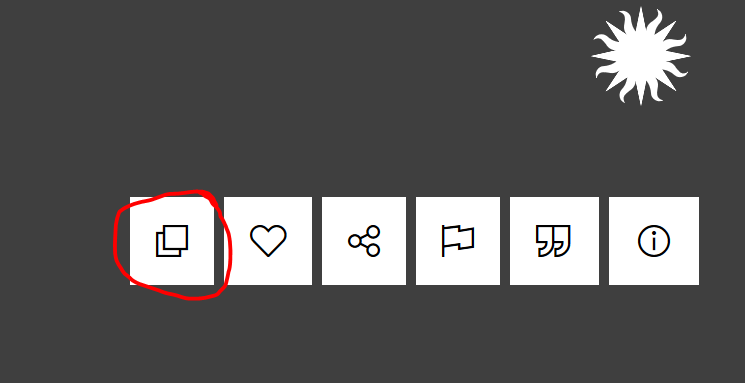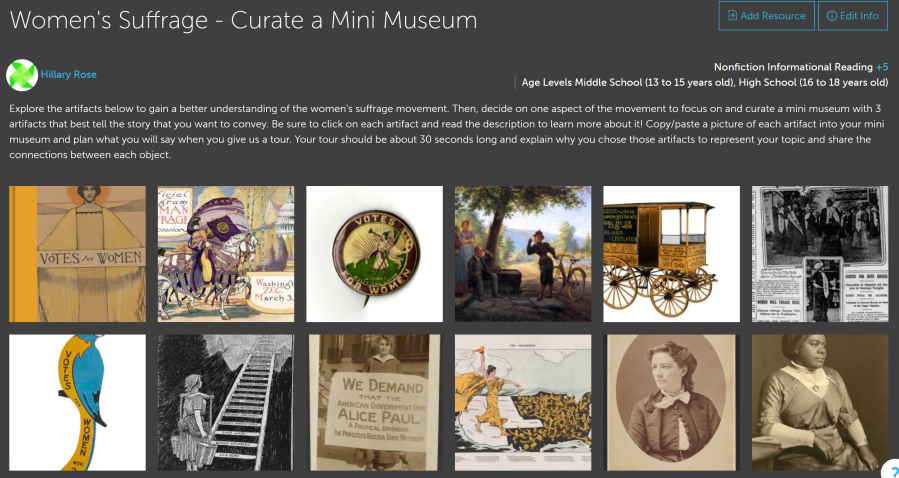Depending on what subject you teach, we all have a goal in mind for how our teaching impacts students. As a history teacher with a background in museum work, my biggest goal is for my students to learn to curate their knowledge to be able to share it with others. This involves so many of those important historical thinking skills: making connections, periodization, analyzing sources, and crafting arguments. It sounds like a lot to ask of high school students, but here is one simple activity I use throughout the year to help them build skills in curating knowledge.
Smithsonian Learning Lab
Last year, I attended the Museum Computer Network Conference to present on my work as the Education Advisor with Girl Museum. I expected to learn a lot of great things to apply to my work with museums, but I also learned about this incredible tool that I use weekly in my history classroom! Smithsonian Learning Lab was built for use by teachers and students and is so simple and effective to implement if your students have computers with internet access. I use it for formative assessment on a regular basis by asking students to create their own mini museums – and they love it! There are thousands of amazing primary sources available from the Smithsonian including photographs, documents, physical objects, audio, and video.
Here are the simple steps I use:
- Visit Smithsonian Learning Lab: https://learninglab.si.edu/
- Sign up for an account. (It is free!)
- Spend some time exploring – there is a lot to see!
- Decide what topic/era/concept you will focus on.
- Click on “create” and then type in the search bar to find an existing collection that you can adapt. For my example, I will focus on women’s suffrage.

6. Browse through the resulting collections and choose one that is a good starting point for your topic. Click on the button to copy the collection.

7. Now, you can edit the collection. Change the title and description, add and remove artifacts from the collection, and make it into exactly what you need! I typically place 12-15 artifacts in my collection for students to explore.
8. I typically place 12-15 artifacts in my collection for students to explore. See an example of my collection below:

9. The instructions for students are included in the collection online, but of course I also explain them to students. An easy place to have your students create their mini museum is in Google Slides. You can create a slides presentation with a blank slide for each student, or have each student create their slide and share it with you. I have students choose just 3 artifacts and paste a photo of each into their slide and then prepare a 30 second “tour” to explain their choices, what aspect of the topic they focused on, and the connections between artifacts.
10. Students then have time to work. They explore the artifacts in the collection by reading about each one. Then, they should choose a focus for their mini museum and pick the 3 artifacts that do the best job of telling that story and write their short tour. For example, a student might focus on promotional materials for women’s suffrage.

11. Once students have completed their museums, I project them on the screen and have each student give their short tour. It is always so interesting to see the different approaches that students take!
Students enjoy this activity because they get to make choices, and it seems pretty “easy” because they only need to choose 3 items. However, it is a meaningful activity and great formative assessment because it gets them analyzing primary sources, making connections, and synthesizing information into something of their own.

Pingback: Teaching Virtually: What it’s Really Like – Rosie the History Teacher